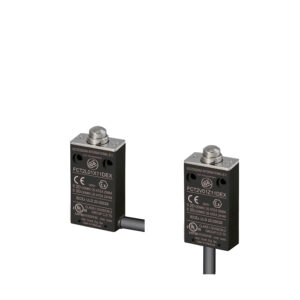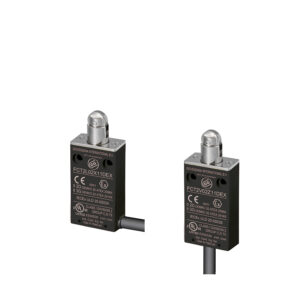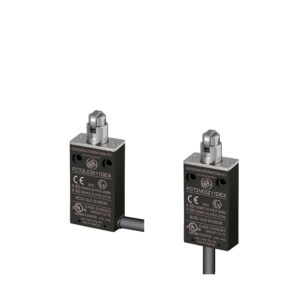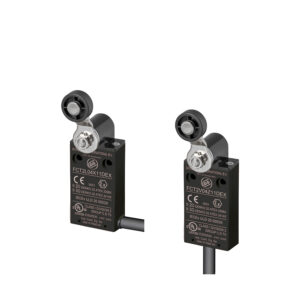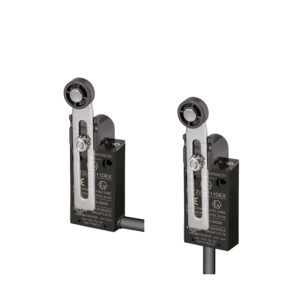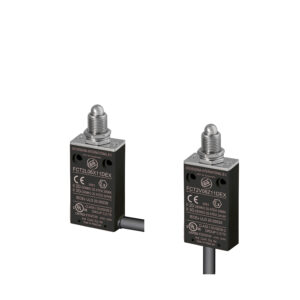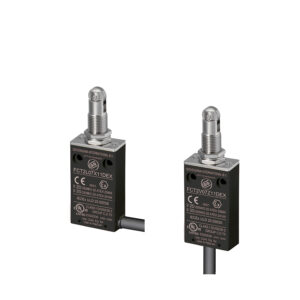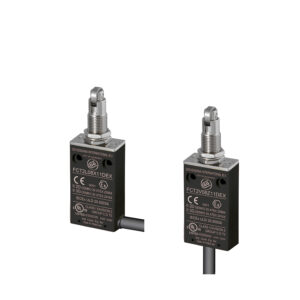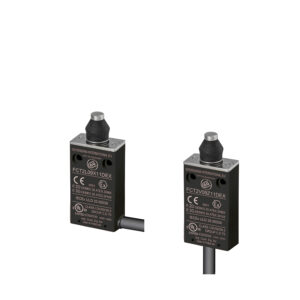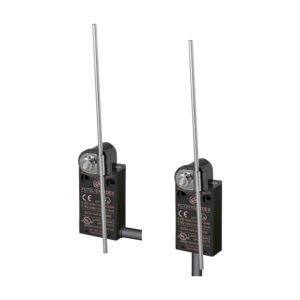ATEX & IECEx: Pre-wired Limit Switches FCT-Ex
The FCT-EX LIMIT SWITCHES are a series of thermoplastic pre-wired limit switches with an indissociable cable. The cable could be with lateral or vertical entry. Available 10 different types of actuators.
The limit switch is designed to be equipped with two different types of contact blocks, as follows:
– CONTACT ELEMENTS DIRECT ACTING (or Slow Break – X11 type)
the contact element of a device for manual or automatic control circuits where speed of movement of the contact depends on the speed of motion of the actuator
– CONTACT ELEMENTS ACTING INDIPENDENTLY (or Snap Action – Z11 type)
the contact element of a device for manual or automatic control circuits where the speed of motion of the contact is virtually independent of the speed of motion of the actuator. Commonly called “quick trigger” the electrical behavior of these elements means that the contact is fast in order even in the slow movements of the actuator. These contact elements have position doesn’t coincide with the release of drive (differential stroke).
Both contact blocks are equipped with NO contact and NC contact, the cable is composed by 4 wires.
The FCT-EX series are classified as follows:
IECEx classification: Ex dc ec IIB T5 Gc | Ex tb IIIC T 95°C Db
ATEX classification: II 3G | II 2D
All the models of the series are verified to be in compliance with the follows:
Apparatus Category 3 G, suitable for installation hazardous areas: Zone 2 according to EN/IEC 60079-10-1.
Apparatus Category 2 D, suitable for installation hazardous areas: Zone 21-22 according to EN/IEC 60079-10-2.
The FCT-EX apparatus complying with the ATEX Directive 2014/34/EU, IECEx Scheme and UL HazLoc.
Complying with the standards: IEC 60079-0:2017, IEC 60079-7:2015 AMD1:2017, IEC 60079-1:2014, IEC 60079-31: 2013, EN IEC 60079-0:2018, EN IEC 60079-7:2015/A1:2018, EN IEC 60079-1:2014, EN 60079-31: 2014.
NFPA70 (NEC) art. 500 classification: Class I, Division 2, Group C,D, T5
Complying with the standards: UL 121201, 9th Ed., Rev. 2019-08-26 – CSA C22.2 No. 213-17, 3rd Ed., Issued 2017-09 + Update No. 1:2018-08 + Update No. 2:2019-08-26

